Did the Double Jeopardy Clause of the “original” Constitution bar re-trial after a hung jury?
David Savage writes in an article published yesterday in the Los Angeles Times and titled “The Supreme Court’s unlikely friend to criminals” [H/T How Appealing]:
Justice Antonin Scalia, the Supreme Court’s most outspoken and combative conservative, is not often described as friendly to criminals.
But in recent years, Scalia has led an unusual pro-defendant faction at the high court in reversing convictions for murder, drug dealing, wife beating and drunken driving.
. . .
Sometimes, Scalia’s insistence on following the “original” Constitution leads to unexpected results. And for him, there are no shades of gray and no halfway measures.
The 6th Amendment to the Constitution says the “accused shall enjoy the right … to be confronted with the witnesses against him.” To Scalia, this clause not only gives defendants the right to challenge actual witnesses, but also the right to bar testimony from all those “witnesses” who did not or cannot testify in court. He takes this view even if the witness is dead.
On the other hand, in a 2009 defendant-friendly SCOTUS decision from which Scalia dissented, Yeager v. U.S., the majority wrote:
The Double Jeopardy Clause of the Fifth Amendment provides: “[N]or shall any person be subject for the same offence to be twice put in jeopardy of life or limb.”
While we have decided an exceptionally large number of cases interpreting this provision, see, e.g., United States v. DiFrancesco, 449 U.S. 117, 126-127, 101 S.Ct. 426, 66 L.Ed.2d 328 (1980) (collecting cases), most of our decisions have found more guidance in the common-law ancestry of the Clause than in its brief text. Thus, for example, while the risk of being fined or imprisoned implicates neither “life” nor “limb,” our early cases held that double jeopardy protection extends to punishments that are not “positively covered by the language of [the] amendment.” Ex parte Lange, 18 Wall. 163, 170, 21 L.Ed. 872 (1874). As we explained, “[i]t is very clearly the spirit of the instrument to prevent a second punishment under judicial proceedings for the same crime, so far as the common law gave that protection.” Ibid.
Our cases have recognized that the Clause embodies two vitally important interests. The first is the “deeply ingrained” principle that “the State with all its resources and power should not be allowed to make repeated attempts to convict an individual for an alleged offense, thereby subjecting him to embarrassment, expense and ordeal and compelling him to live in a continuing state of anxiety and *2366 insecurity, as well as enhancing the possibility that even though innocent he may be found guilty.” Green v. United States, 355 U.S. 184, 187-188, 78 S.Ct. 221, 2 L.Ed.2d 199 (1957); see Benton v. Maryland, 395 U.S. 784, 795-795, 89 S.Ct. 2056, 23 L.Ed.2d 707 (1969); DiFrancesco, 449 U.S. at 127-128, 101 S.Ct. 426. The second interest is the preservation of “the finality of judgments.” Crist v. Bretz, 437 U.S. 28, 33, 98 S.Ct. 2156, 57 L.Ed.2d 24 (1978).
The first interest is implicated whenever the State seeks a second trial after its first attempt to obtain a conviction results in a mistrial because the jury has failed to reach a verdict. In these circumstances, however, while the defendant has an interest in avoiding multiple trials, the Clause does not prevent the Government from seeking to reprosecute. Despite the argument’s textual appeal, we have held that the second trial does not place the defendant in jeopardy “twice.” Richardson v. United States, 468 U.S. 317, 323, 104 S.Ct. 3081, 82 L.Ed.2d 242 (1984); see 3 J. Story, Commentaries on the Constitution § 1781, pp. 659-660 (1833). Instead, a jury’s inability to reach a decision is the kind of “manifest necessity” that permits the declaration of a mistrial and the continuation of the initial jeopardy that commenced when the jury was first impaneled. See Arizona v. Washington, 434 U.S. 497, 505-506, 98 S.Ct. 824, 54 L.Ed.2d 717 (1978); United States v. Perez, 9 Wheat. 579, 580, 6 L.Ed. 165 (1824). The “interest in giving the prosecution one complete opportunity to convict those who have violated its laws” justifies treating the jury’s inability to reach a verdict as a nonevent that does not bar retrial. Washington, 434 U.S. at 509, 98 S.Ct. 824.
Scalia wrote in dissent:
Today’s opinion begins with the proclamation that this Court has “found more guidance in the common-law ancestry of the [Double Jeopardy] Clause than its brief text.” Ante, at 2365. Would that it were so. This case would be easy indeed if our cases had adhered to the Clause’s original meaning. The English common-law pleas of auterfoits acquit and auterfoits convict, on which the Clause was based, barred only repeated “prosecution for the same identical act and crime.” 4 W. Blackstone, Commentaries on the Laws of England 330 (1769) (emphasis added). See also Grady v. Corbin, 495 U.S. 508, 530-535, 110 S.Ct. 2084, 109 L.Ed.2d 548 (1990) (SCALIA, J., dissenting). As described by Sir Matthew Hale, “a man acquitted *2372 for stealing [a] horse” could be later “arraigned and convict[ed] for stealing the saddle, tho both were done at the same time.” 2 Pleas of the Crown 246 (1736). Under the common-law pleas, the jury’s acquittal of Yeager on the fraud counts would have posed no bar to further prosecution for the distinct crimes of insider trading and money laundering.
But that is water over the dam. In Ashe the Court departed from the original meaning of the Double Jeopardy Clause, holding that it precludes successive prosecutions on distinct crimes when facts essential to conviction of the second crime have necessarily been resolved in the defendant’s favor by a verdict of acquittal of the first crime. 397 U.S. at 445-446, 90 S.Ct. 1189.Even if I am to adhere to Ashe on stare decisis grounds, cf. Grady, supra, at 528, 110 S.Ct. 2084 (SCALIA, J., dissenting), today’s holding is an illogical extension of that case. Ashe held only that the Clause sometimes bars successive prosecution of facts found during “a prior proceeding.” 397 U.S. at 444, 90 S.Ct. 1189. But today the Court bars retrial on hung counts after what was not, under this Court’s theory of “continuing jeopardy,” Justices of Boston Municipal Court v. Lydon, 466 U.S. 294, 308, 104 S.Ct. 1805, 80 L.Ed.2d 311 (1984), a prior proceeding but simply an earlier stage of the same proceeding.
As an historical matter, the common-law pleas could be invoked only once “there ha[d] been a conviction or an acquittal — after a complete trial.” Crist v. Bretz, 437 U.S. 28, 33, 98 S.Ct. 2156, 57 L.Ed.2d 24 (1978). This Court has extended the protections of the Double Jeopardy Clause by holding that jeopardy attaches earlier: at the time a jury is empanelled and sworn. Id., at 38, 98 S.Ct. 2156. Although one might think that this early attachment would mean that any second trial with a new jury would constitute a second jeopardy, the Court amended its innovation by holding that discharge of a deadlocked jury does not “terminat[e] the original jeopardy,” Richardson v. United States, 468 U.S. 317, 325, 104 S.Ct. 3081, 82 L.Ed.2d 242 (1984). Under this continuing-jeopardy principle, retrial after a jury has failed to reach a verdict is not a new trial but part of the same proceeding.
Note that Scalia’s observation that “one might think that this early attachment would mean that any second trial with a new jury would constitute a second jeopardy” appears to agree with the majority’s acknowledgement of this “argument’s textual appeal.” Note also the SCOTUS’ explanation in Crist v. Bretz for what Scalia calls “its innovation” (attaching jeopardy at the time a jury is empanelled and sworn):
The reason for holding that jeopardy attaches when the jury is empaneled and sworn lies in the need to protect the interest of an accused in retaining a chosen jury. That *36 interest was described in Wade v. Hunter, supra, as a defendant’s “valued right to have his trial completed by a particular tribunal.” 336 U. S., at 689. It is an interest with roots deep in the historic development of trial by jury in the Anglo-American system of criminal justice.Throughout that history there ran a strong tradition that once banded together a jury should not be discharged until it had completed its solemn task of announcing a verdict.
Justice Powell, in his dissenting opinion in Crist v. Bretz, described this common-law rule forbidding discharge of the jury until it had announced a unanimous verdict as “a rule that we well might have come to regard as an aspect of due process if it had not been absorbed in this country by the Double Jeopardy Clause.”
This law review article provides pertinent historical context to the question in the title of this post:
Little wonder, then, that when English juries began to supplant the ordeal in the thirteenth century, a requirement of unanimity quickly took hold. For the jury was replacing a mechanism that, in theory, was perfect. As Pollack and Maitland put it: “Nor must it escape us that the justices are pursuing a course which puts the verdict of the country on a level with the older modes of proof. If a man came clean from the ordeal . . . , the due proof would have been given; no one could have questioned the dictum of Omniscience.” A jury verdict of 7-to-5 would hardly have seemed beyond question.
Moreover, the English jury was viewed as speaking for the community, and the English community of the thirteenth century had but one voice. Indeed, had the jury arisen later, a majority vote might have been sufficient to convict. In France, where Voltaire was instrumental in the institution of juries, a vote of 8-to-4 in a modern trial produces a conviction. But in thirteenth century England, “as yet men had not accepted the dogma that the voice of a majority binds the community.” Whether it was the king, the grand jury, or the criminal jury, each institution had only one voice. Again in the words of Pollock and Maitland, “[T]he voice of the twelve men is deemed to be the voice of the country-side, often the voice of some . . . district which is more than a district, which is a community.” In sum, “the parties to the litigation have ‘put themselves’ upon a certain test. That test is the voice of the country. Just as a corporation can have but one will, so a country can have but one voice.”
. . .
Very little changed over the next four hundred years. In 1791, Americans had so much faith in the wisdom of local criminal juries that the initial failure to require local juries threatened to doom the Constitution before its ultimate passage. Article III required juries in federal criminal cases, to be sure, but the trial could be held, and thus the jury empanelled, in any court in the state. Patrick Henry stated the pervasive feelings at the time:
“Why do we love this trial by jury? Because it prevents the hand of oppression from cutting you off. They may call any thing rebellion, and deprive you of a fair trial by an impartial jury of your neighbors. Has not your mother country magnanimously preserved this noble privilege upwards of a thousand years? . . . That country had juries of hundredoers [local citizens] for many generations. And shall America give up that which nothing could induce the English people to relinquish? The idea is abhorrent to my mind. There was a time when we should have spurned it. This gives me comfort – -that as long as I have existence, my neighbors shall protect me. Old as I am, it is probable that I may yet have the appellation of rebel. I trust that I shall see congressional oppression crushed in embryo. As this government stands, I despise and abhor it . . . [I]t takes away the trial by jury in civil cases, and does worse than take it away in criminal cases. It is gone unless you preserve it now.”
The Anti-Federalists believed juries could reach more just outcomes than judges. To reach those outcomes of course, juries must return a verdict. And the evidence from the colonies is that juries always did return a verdict. We know, for example, that no mistrials appeared in New Jersey criminal cases from 1749-57. This is not surprising, of course, because mistrials were not a recognized outcome in Blackstone’s Commentaries.
If an eighteenth century English jury did not reach a unanimous verdict before the judge had to leave for the next town on his circuit, he could “carry them round the circuit from town to town in a cart.” We suspect not many juries would fail to reach a unanimous verdict if the alternative was to be kept together and transported by cart from town to town. Occasionally, as we will see, a brave jury would refuse to reach a verdict, but these were outliers in the common law system.
The first report of a mistrial for failure to reach a verdict in an American court was 1807.
It appears, therefore, that the real judicial “innovation” in the law that occurred after the establishment of the Constitution was not in holding that jeopardy attached prior to the jury’s verdict, but in relaxing the rule forbidding (as a matter of Due Process if not the Double Jeopardy Clause) the discharge of the jury until it reached a verdict. This innovation might very well have been required by the Due Process rights of the jurors themselves, but it nevertheless could not justify relaxing the requirements of the Double Jeopardy Clause, the text of which, as both the majority and Scalia’s dissent in Yeager appear to acknowledge, seems to mean that “any second trial with a new jury would constitute a second jeopardy.”

 Follow
Follow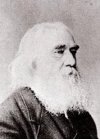
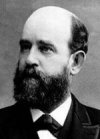
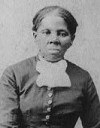
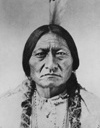
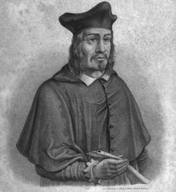
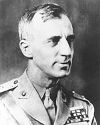
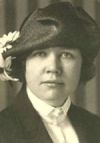
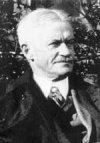
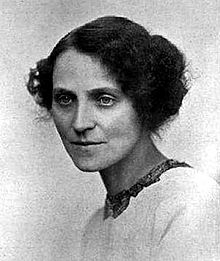

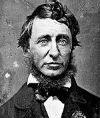
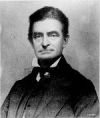
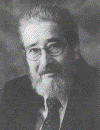
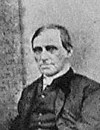
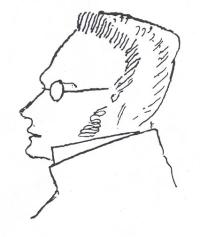
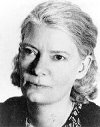
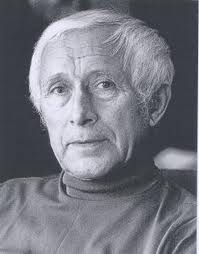
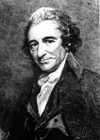

Rehnquist, writing for the majority in Richardson v. United States (1984), said, “The case law dealing with the application of the prohibition against placing a defendant twice in jeopardy following a mistrial because of a hung jury has its own sources and logic.”
As I wrote on the subject a couple of years ago (see http://gamso-forthedefense.blogspot.com/2009/09/do-they-really-believe-this-stuff.html), “When ordinary logic won’t do, when they have to develop a new and special sort of logic, you know the rule they’ll come up with makes no sense. Here’s the rule: Even though the judge sent the first jury home, they then called a new jury and started over, the new trial is still the same trial.”
1